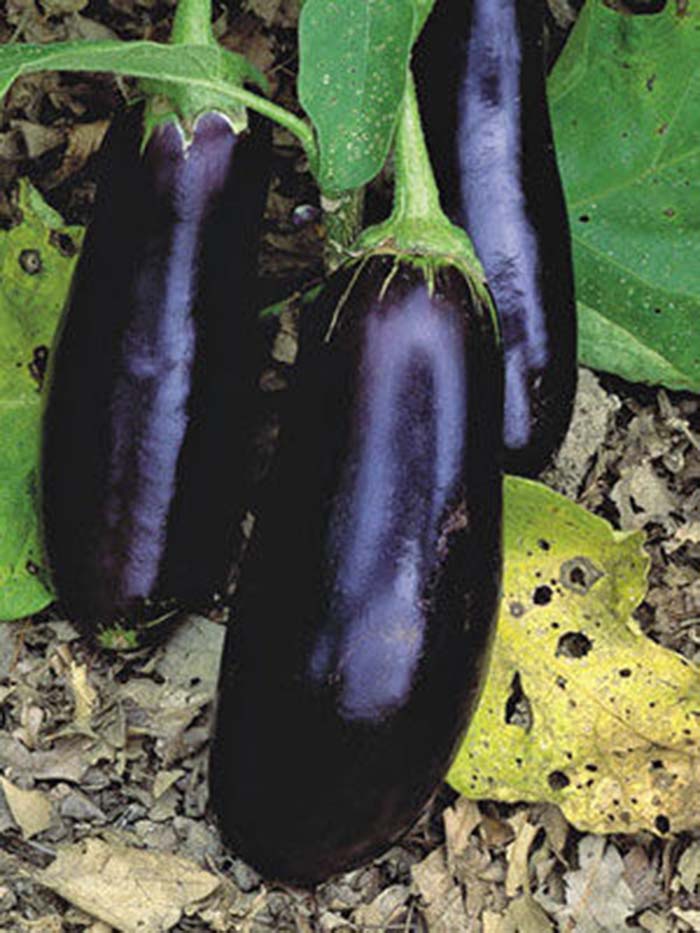Part 1: Best Vegetables for the Midwest
These varieties are built to thrive in the conditions where you live

1. ‘Diamond’ eggplant
Maturity: 70 to 80 days from transplant
Yield: 20 to 30 fruit per plant
Needs: Full sun; rich, moist, well-drained soil; lots of heat
Eggplants love heat; most thrive in warm regions of East Asia and even hotter tropical Southeast Asia. But ‘Diamond’ is a typical oval, Japanese-style purple eggplant from Ukraine that begins delivering here in early July and continues copious production right up to frost. Eight to 10 plants yield a wheelbarrow of fruit by season’s end—plenty enough for fresh eating all summer as well as an ample supply of roasted, peeled flesh for the freezer.
2. ‘Amish Paste’ tomato
Maturity: 80 to 90 days from transplant
Yield: Several pounds per plant
Needs: Full sun; moist, well-drained soil
Having grown more than 3,000 varieties of tomatoes makes choosing a favorite quite difficult. One variety, however, has risen to the top as my every-year staple. ‘Amish Paste’ is an indeterminate but rather tame climber, which is easily trellised or staked. It bears a huge, steady crop of large oval fruit, versatile enough for slicing or canning, meaty enough for paste, yet juicy enough for juicing. What also sets this heirloom apart is that it has consistently won taste tests here and in Australia. No matter what the weather, ‘Amish Paste’ has proven to be delicious and reliable.
3. ‘Feherozon’ pepper
Maturity: 80 to 85 days from transplant
Yield: Up to 12 fruit per plant
Needs: Full sun; moist, well-drained soil
Of the 1,500 varieties of peppers that I’ve surveyed at the Seed Savers Exchange, my sweet pepper of choice for fresh eating, cooking, and freezing is ‘Feherozon’. It’s a pointed, pimento-type Hungarian pepper that starts out yellow and turns orange-red when ripe. The small plants are often so loaded with big peppers that one can hardly see the leaves. I start my pepper seeds indoors in mid-March—almost a month before my tomatoes—and move them to a cold frame during the daytime until night temperatures warm up. Transplants are quite hefty by the time I set them out before June 1.
4. ‘Burgess Buttercup’ winter squash
Maturity: 95 to 105 days
Yield: Three to four 3- to 5-pound fruit
Needs: Full sun; moist, well-drained soil
Although my home garden is big enough to handle many space-intensive, rambling varieties of winter squash, I still favor the more compact vines of ‘Burgess Buttercup’. Most of the top-flavored and textured winter squash belong to the species Cucerbita maxima, and ‘Burgess Buttercup’ ranks among the best. Its medium-size fruit are a manageable size for most families. It will keep well over the winter, yet its skin is tender enough for easy cutting. It’s excellent for baking, and once you’ve used this squash to make a pie, you will never go back to pumpkin.
—David Cavagnaro has trialed over 15,000 heirloom vegetables for Seed Savers Exchange in Decorah, Iowa.
Photos: David Cavagnaro
Fine Gardening Recommended Products

Berry & Bird Rabbiting Spade, Trenching Shovel
Fine Gardening receives a commission for items purchased through links on this site, including Amazon Associates and other affiliate advertising programs.

A.M. Leonard Deluxe Soil Knife & Leather Sheath Combo
Fine Gardening receives a commission for items purchased through links on this site, including Amazon Associates and other affiliate advertising programs.

Gardener's Log Book from NYBG
Fine Gardening receives a commission for items purchased through links on this site, including Amazon Associates and other affiliate advertising programs.








Comments
Log in or create an account to post a comment.
Sign up Log in